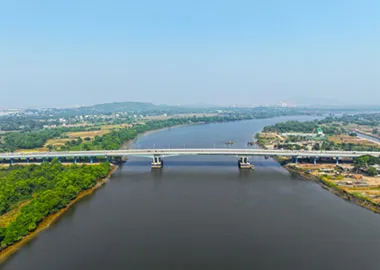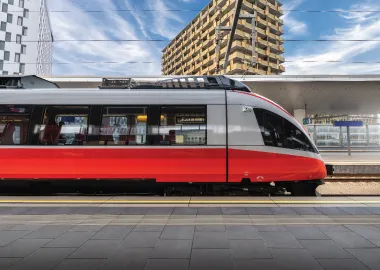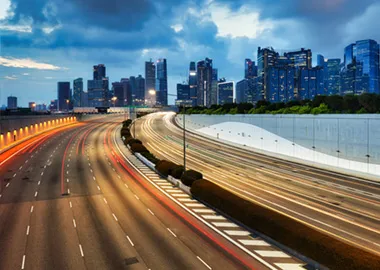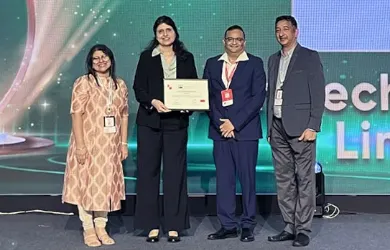- Our Story
- Our Impact
-
Our Projects
Commercial
- Careers
All About Mumbai Metro: Transforming Connectivity and Enhancing Lives
By LODHA
December 08, 2023Mumbai, the bustling metropolis on the western coast of India, is known for its vibrant culture, diverse population and bustling streets. As the city continues to grow, addressing transportation challenges has become crucial. The Mumbai Metro is a remarkable infrastructure project that has emerged as a game-changer, offering numerous benefits to the residents and transforming connectivity across the city. The Mumbai Metro route comprises multiple lines that span across the city, connecting key destinations and providing a reliable and time-efficient mode of transportation for residents and visitors alike.
Premium real estate developers such as Lodha are also growing with the city's infrastructure, strategically creating luxurious developments along Mumabi's Metro lines to ensure connectivity for residents. Read on to learn more about the Mumbai Metro, its various benefits, and Lodha developments in surrounding areas.
How The Metro Will Benefit Mumbaikars?
The Mumbai Metro connectivity will pose an array of advantages for the residents living in areas covered by the metro network. The benefits of Mumbai Metro as mentioned below:
a) Saving Time On Commutes: With Mumbai's notorious traffic congestion, commuting by road can be a time-consuming affair. Road travel is even more time-consuming and stressful in the monsoon, with slippery wet roads, potholes and flooding in several key parts of the city causing traffic to worsen. The metro system offers a faster and more convenient mode of transportation, allowing residents to save valuable time during their daily commutes. It is also a more time-efficient option for commuters to consider during the monsoon season.
b) Reduced Congestion: Even with just a handful of metro lines open at the time of this article being penned, the Metro has been instrumental in reducing road traffic. As more people opt for the metro, it relieves the burden on the city's roads, reducing traffic congestion. This not only leads to quicker travel but also helps minimise carbon emissions, promoting a greener and more sustainable environment.
c) Enhanced Connectivity: The Mumbai Metro map illustrates the comprehensive rail network, covering various parts of the city and enabling seamless connectivity for commuters. It has revolutionized connectivity in the city by establishing a well-planned and extensive network of lines. These lines connect major residential areas, commercial districts, and transportation hubs, offering a convenient and hassle-free mode of travel. The metro system interconnects with local trains, buses, and other modes of transportation, providing commuters with integrated travel options. It acts as a lifeline, bridging the geographical gaps within Mumbai and making the city more accessible.
The metro's efficient connectivity has a significant impact on the quality of life for residents. It reduces the stress and strain associated with long commutes, ensuring that people can reach their destinations quickly and comfortably. The metro also fosters social and economic integration by making distant areas more accessible and bridging the gaps between neighbourhoods.
Current Status Of The Mumbai Metro
Currently, only two out of fourteen lines of the Mumbai Metro are operational and the rest are ongoing metro projects in Mumbai. However, the project has witnessed remarkable progress and continues to expand its reach. The metro lines currently in service are -
a) Line 1 (Versova-Andheri-Ghatkopar): This was the first metro line to become operational in Mumbai. While connectivity between the city's eastern and western suburbs has been a challenge in the past, Line 1 has improved connectivity, providing a crucial link between Andheri and Ghatkopar.
b) Line 2A (Dahisar-DN Nagar): This line connects Dahisar in the northern suburbs with DN Nagar in Andheri, offering improved connectivity for residents along the route. Not only does this metro line take a significant load off the city's esteemed local trains, it also has been instrumental in reducing traffic congestion on one of Mumbai's busiest routes - New Link Road from Dahisar East to DN Nagar.
Some notable upcoming metro lines are -
c) Line 3 (Colaba-Bandra-Seepz): Popularly known as the Mumbai Metro-3 or the Colaba-Bandra- SEEPZ line, it is a vital corridor that will connect South Mumbai to the city's western suburbs. Once completed, this line will be a game-changer for commuters from the northern suburbs of the city, significantly reducing travel time.
d) Line 7 (Dahisar East-Andheri East): This line will connect Dahisar East to Andheri East offering residents in the Eastern Suburbs more connectivity and access to other parts of the city as well. The two operational lines are transforming the way Mumbaikars travel, and several other lines are under construction or in the planning stage, promising further connectivity enhancements.
Lodha Developments In Metro Areas
Lodha, one of Mumbai's leading real estate developers, has recognised the importance of Mumbai Metro in enhancing connectivity. Driven by our vision of Building a Better Life, we have strategically and consciously developed projects in areas that benefit from the metro network. This will give our residents ample access and connectivity to the rest of the city. Some notable Lodha projects in these areas include:
a) Lodha Palava City: Located in the rapidly developing Thane district, Lodha Palava City offers a range of residential options. With the upcoming metro line 4 in Thane, residents of Palava City will enjoy enhanced connectivity to key locations in Mumbai.
b) Lodha Amara: Located in Thane, Mumbai, Lodha Amara is situated close to the proposed Line 4 (Wadala-Thane-Kasarvadavli Metro Line
c) Lodha Codename Golden Sunrise: Located in the western suburb of Taloja, this Lodha project offers modern amenities and a vibrant community experience. The upcoming metro line in Taloja will provide residents with a convenient transportation option, facilitating easy travel across the city.
d) Lodha Bel Air: Mumbai Metro Line 6, which is slated to run from Jogeshwari to Vikhroli, will be a key means of transport for residents of Lodha Bel Air in Jogeshwari. This Lodha development is a world-class gated community nestled in 5 acres of exclusive luxury.
e) Lodha Upper Thane: Nestled in Thane, Mumbai, this integrated township is well-positioned near the upcoming Line 4 (Wadala-Thane-Kasarvadavli Metro Line). The metro line will offer seamless connectivity to key areas, including Wadala, Ghatkopar, and Kasarvadavli.
The existing metro and the new metro lines in Mumbai have emerged as a game-changer for the city, revolutionizing connectivity and enhancing the lives of residents. With its time-saving commutes, reduced congestion, and enhanced connectivity, the metro system has become an integral part of Mumbai's transportation infrastructure. Lodha, being a visionary real estate developer, has strategically developed projects in areas served by the metro network, ensuring that residents can enjoy the benefits of seamless connectivity. As the Mumbai Metro expands its reach, it will continue to transform the city's landscape, making it more accessible, vibrant, and convenient for all.
You may also like





 Enquire
Enquire
 Call
Call
 chat
chat





